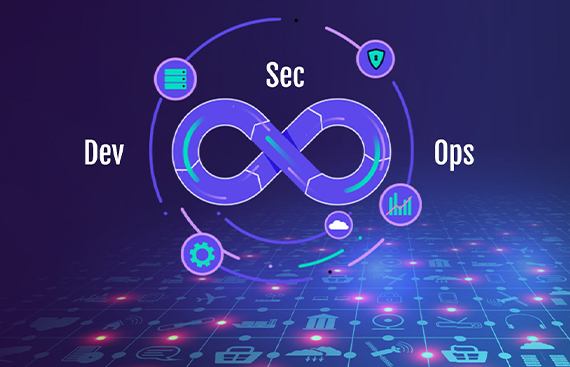DevSecOps: When Security Is Priority

A relatively recent idea built on the DevOps principles is DevSecOps. It goes one step further and incorporates the security component into the SDLC, where DevOps links development and operations in a continuous, synchronized cycle. Security is built into the cloud application from the beginning, preventing considerable losses in time and money due to a cyber attack.
DevSecOps in cloud security becomes a real benefit to the widespread adoption of cloud computing. Security testing and monitoring are integrated into the process along with continuous development and deployment, making the cloud app secure. Automation is used in DevOps to improve the consistency and speed of software delivery. While enhancing the security of published software is the core objective of DevSecOps, implementing and maintaining security during the development, deployment, and post-production cycles must also be automated for DevSecOps to be effective.
DevSecOps: Addressing Security Challenges of Businesses
DevSecOps is a software development method that emphasizes incorporating security procedures into the DevOps procedure. Making security an inherent part of the software development lifecycle addresses the security issues enterprises confront. Security is frequently neglected during the typical software development cycle and managed at the end. It could result in security flaws being found too late in the development cycle, which would be expensive to patch and postpone the software's release. Security is incorporated into every phase of the development process to overcome this problem.
A change prioritizes sharing security responsibilities amongst development, operations, and security teams. Automating security testing and deployment through tools and procedures can help find and fix security flaws early in the development process. It can ensure that software is launched on schedule and with a high level of security and can help to reduce the cost and time needed to remedy security vulnerabilities.
DevSecOps is an essential approach for addressing the security challenges businesses face today. By making security an integral part of the software development lifecycle, companies can ensure that their software is secure, reliable, and released on time.
Cloud Security Revolutionising DevSecOps Techniques
Using the DevSecOps methodology, security procedures have been incorporated into the software development cycle. This approach aims to enable organizations to deliver secure applications and services faster. On the other hand, cloud security is a critical concern for many organizations that use cloud-based services to store and process their data.
Shift-Left Security: Shift-left security is a DevSecOps strategy emphasizing early security integration into software development. Before the code has deployed in the cloud, this method seeks to locate and address vulnerabilities in the code. Organizations can lower the risk of security vulnerabilities by including security testing in the software development process.
Infrastructure as Code: DevSecOps approach, "Infrastructure as Code" (IaC), employs code to automate infrastructure deployment and management. IaC aids in ensuring the security and industry compliance of the infrastructure deployed to the cloud. IaC also gives organizations visibility and transparency into the infrastructure deployment process, allowing them to find and address security flaws.
Continuous Security Monitoring: A DevSecOps strategy called Continuous Security Monitoring (CSM) continuously scans cloud-based systems for security vulnerabilities. CSM tools can speed up the detection and response to security events by assisting in real-time detection and action.
DevSecOps Training: Any DevSecOps approach must include instruction on DevSecOps techniques for developers, security engineers, and operations personnel. Organizations may guarantee that security has integrated into every step of the software development process by offering personnel DevSecOps training.
Use of Automated Security Testing: A DevSecOps strategy called automated security testing employs technologies to automatically find security flaws in code. These tools can scan code and locate security flaws, including SQL injection, cross-site scripting, etc.
End of Line
Organizations may build more secure applications and resist hacker attacks and data breaches by prioritizing security. Traditional security measures must be improved in the modern digital era since cyber security threats constantly change. To combat this, DevSecOps incorporates protection into each stage of the development cycle, from design to deployment. The organizational culture must change for DevSecOps to succeed, and all stakeholders, developers, operations teams, and security experts must collaborate to make security a top priority at all times. This partnership ensures that security issues are recognized and dealt with early on in the development process rather than after that. It lowers the chance of expensive and devastating data breaches by enabling organizations to identify and address security issues far earlier in development. Organizations can also save time and money by avoiding the need for costly and time-consuming security audits and updates after deployment by integrating security into the development process.
Read More News :
Godrej Consumer has offered Raymond Rs. 2,825 crore to purchase the brands KamaSutra and Park Avenue


.jpg)
